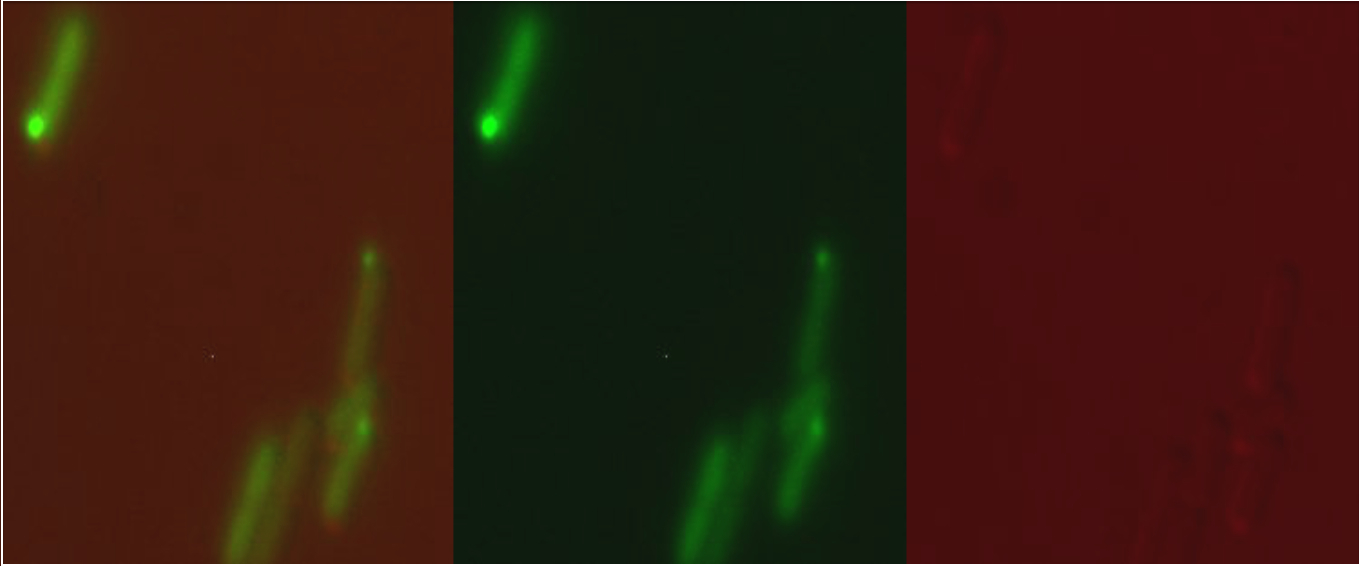Part:BBa_K1980001
TAT Copper Storage Protein 1 sfGFP
Copper Storage protein 1 (Csp1) is a tetrameric copper storage protein found in the periplasm of Methylosinus trichosporium OB3b. We investigated whether this part could act as a copper chelator when expressed in E. coli. We modified the protein by adding a TAT signal peptide from the E. coli enzyme CueO in place of the native TAT sequence and added a c terminal sfGFP fluorescence protein with a C terminal his tag in an attempt to direct the protein to the periplasm. The Csp1 and sfGFP are separated by a short hydrophilic, flexible linker.
Sequence and Features
- 10COMPATIBLE WITH RFC[10]
- 12COMPATIBLE WITH RFC[12]
- 21INCOMPATIBLE WITH RFC[21]Illegal XhoI site found at 886
- 23COMPATIBLE WITH RFC[23]
- 25INCOMPATIBLE WITH RFC[25]Illegal NgoMIV site found at 448
- 1000COMPATIBLE WITH RFC[1000]
Experience
We were unable however to detect copper chelation activity of Csp1sfGFP in vivo using a BCS absorbance assay. Modelling by our team suggested that this was because insufficient protein could be expressed to chelate the amount (units of μmols) needed to be detectable on the assay.
We purified this protein but were still unable to detect copper chelation with the assay in our purified extracts.
When expressed from the pBAD, arabinose-inducible commercial expression plasmid, or from our copper sensitive promoter (part BBa_K1980010) our version of Csp1sfGFP was observed to form inclusion bodies in the cytoplasm:
We discovered a speculative paper by Hotzer et al(3) that described how His-tagged GFP can be quenched by a copper ion binding to this His tag leading to a reduction in the fluorescence lifetime (the time the fluorophore spends in the excited state before returning to the ground state by emitting a photon.) They speculated that this could potentially be used as a in vivo copper assay.

As we had His-tagged our chelator-sfGFP constructs we were curious to see if this technique could be applied to our parts to measure copper chelation in vivo by our parts. We believe that two possibilities were likely:
- Copper chelation by the chelator reduces the free copper concentration inside the cell meaning that less binds to the His tag and the fluorescence lifetime will be greater than a His-tagged sfGFP control
- Copper chelation by the chelator would allow additional quenching if copper was bound within the quenching radius of the fluorophore leading to a reduction in fluorescence lifetime compare with a sfGFP control
Lacking access to a fluorescence lifetime microscope ourselves we contacted Cardiff iGEM who had a FLIM machine in their bioimaging unit. They very kindly agreed to run a few samples for us taking up over five hours of microscope time.
We sent Cardiff iGEM our parts Csp1-sfGFP in pBAD and pCopA CueR sfGFP (as a control) in live MG1655 E. coli in agar tubes. Cardiff grew them overnight in 5ml of LB with 5uM copper with and without 2mM arabinose.
The imaging unit spread each strain on slides and measured the fluorescence lifetime of three areas on each slide.
(Acquisition parameters: using the x63 water immersion objective with excitation at 483nm (71% intensity, pulse rate 40MHz) and emission via a BP500-550 filter. Scan resolution at 512 x 512 pixels at pixel size of 0.26 microns/pixel, 1AU pinhole. Counts of >1000 per lifetime recording.)
FLIM images from one section of each slide:

As expected the pCopA CueR sfGFP control was fluorescent, with and without arabinose, with the mean fluorescence lifetime a consistent 2.6ns.
When Csp1-sfGFP was induced the mean lifetime decreased to 2.5ns and the variance was increased. This might be indicate that copper chelation has occurred or may be reflective of the expression problems of Csp1.
sfGFP:

Csp1-sfGFP:

//cds/reporter/gfp
| None |

